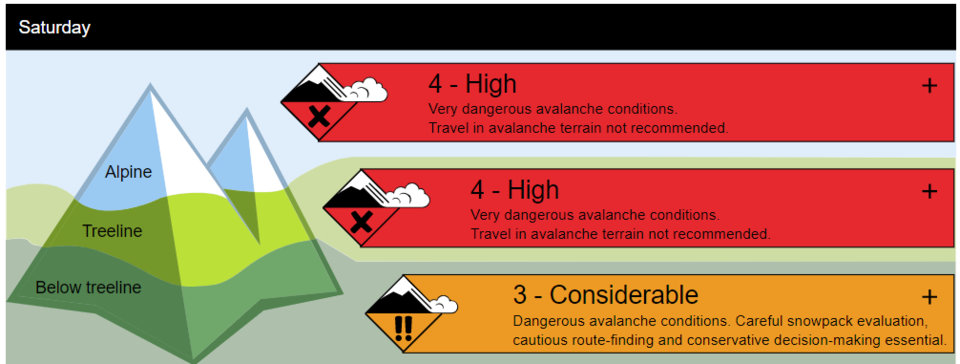A 35-year-old Dawson Creek man was killed last Saturday when he was caught in an avalanche while out snowmobiling north of Mackenzie.
Police and rescue personnel were called to the scene in the Powder King-Bijoux Falls area beginning shortly before 2 p.m. They said two snowmobilers were in the area at the time and one was buried in the snow. The victim's name was not provided.
"The BC Coroners Service has conduct of this incident and is currently investigating to determine the facts surrounding this death. No further details are available at this time," RCMP said in a statement.
On Friday, Avalanche Canada had issued its first forecast of the season and had put the danger rating for the North Rockies at high for treeline and above and considerable for below treeline.
"There was a pretty big storm that pass through the area, almost a week long storm," Avalanche Canada warning service manager Karl Klassen said Monday. "And that storm just started breaking up on Saturday, there was a fair amount of wind and quite a bit of new snow. Temperatures were quite warm and then they cooled off and those are kind of classic conditions for pretty significant avalanche danger.
"We rated the danger as high, we told people to expect large avalanches on all aspects and all elevations given the amount of wind and snow and the temperatures that were occurring at the time."
The high rating is one level below extreme and is used when conditions are deemed to be very dangerous. Travel in avalanche terrain is not recommended when the rating is in place although Klassen said it can be done with proper training and experience.
"Even when the avalanche danger is high or even extreme, there are places in the mountains where avalanches just don't occur so as long as you can recognize that terrain and stay on that terrain, you'd be fine," Klassen said. "But again, just to stress, it's not something you (should do) without getting some training, getting some experience and gaining some knowledge and making a good trip plan before they leave."
Despite the COVID-19 pandemic, he said avalanche courses remain available. Theory is being learned online or in smaller class sizes and with greater physical distancing and masks once outside for the practical part. To find a class, go to avalanche.ca and click on the learn tab.
Thanks to an influx of federal funding, a three-person field team has been working in the region during the winter months since December 2019. Klassen said forecasts for the region will be issued four times a week this season, up from three times a week last winter.



